
‘Max Hattler is a German-born animator-filmmaker who has been steadily producing works for well over a decade. Hattler works with a wide variety of styles and animation techniques, including 2D, 3D and stop-motion. Regardless of his approach, generally his films are unmistakably abstract. When asked why he chooses to work primarily with abstraction, Hattler replies:
I was never that interested in telling stories, but in shaping an environment that can take you somewhere else. You can do that naturally with music, without anyone asking ‘why is it abstract?’ But with imagery, if it’s not figurative then it’s abstract… And then people start questioning it. With music, abstraction is kind of the default. In a way, abstraction has always been a default for me.
‘Hattler is also a composer, and therefore his films place strong emphasis on the audio tracks. In fact, one of the things that Hattler finds most compelling about animation is that it effectively “combines sound and image into one medium, giving each component equal strength. It is a very intricate and intimate way of sculpting time both visually and in sound.”
‘Though many of Hattler’s films appear planned and meticulously composed, he describes his working practice as quite intuitive. Sometimes his works begin with simply “an aesthetic inquiry or an interest in certain shapes and colours, and then things build and grow from these initial starting points, and in a sense develop their own logic.” He continues:
With Shift (2012), I wanted to create ‘otherworldly’ movements, which would help locate it in a different dimension. I tried to animate accordingly, but when playing back some of the animation, it felt too real, too rooted within lived experience, known causality. On a whim, I reversed the footage, and suddenly it worked! Now the movements were lighter and less predictable, and started to make much more sense within themselves, within the idiosyncratic logic of the work itself. This then started to inform the further kinetic development of the piece.
‘Even if the chosen forms are representational (such as a 3D representation of a plastic toy soldier, or a stop-motion object) Hattler will animate these based primarily upon their form, shape and colour rather than what they are. That is, the movement that he applies to them is not necessarily based upon the content of the form but on other more abstract concerns.
‘Like many abstract animators, Hattler employs various strategies that not only create visually interesting sequences, but also ultimately shift the viewer’s attention away from the original context and identity of a single form and towards a purely abstract viewing experience.
One common technique is to make the visual forms appear fundamentally unstable ‘– to make them continually change their appearance – either through metamorphosis, optical flickering, or shattering or amalgamating the forms. For example, in his stop-motion piece Shift, the images (even though identifiable as real objects) continually change appearance and shape. This kind of developmental movement shifts the emphasis away from particular forms or recognisable characters and instead highlights the dynamic and visually compelling movement of abstract imagery.
‘Repetition and patterned movement are further means by which Hattler creates intriguing visual designs and diverts the viewer away from the single form, towards a cohesive and choreographed visual display. Thus, in Spin Hattler begins with a focus on a few plastic toy soldiers. However, as they are subsequently duplicated, they lose their individual identity and become complex patterns of repetitive imagery and movement – no longer representing their singular identity, but a much larger collective.
‘Hattler’s films are visual kaleidoscopes of forms persistent in their development, transformation and choreography of movement. Even Hattler’s more contemplative works such as Sync (2010) never cease in their progressing movement and development of abstract patterns. Though he might use real world elements or occasional representational figures, he successfully reverts such imagery to its abstract fundamentals, either by simplifying it, applying abstract movement, or radically decontextualizing the forms. Though his abstract animations may not provide the viewer with overt narratives, they are often imbued with some definitive meaning, which at the very least provides an immersive alternative space that encourages a multifaceted and a contemplative viewing experience of persistent abstraction.’ — Dan Torre
___
Stills
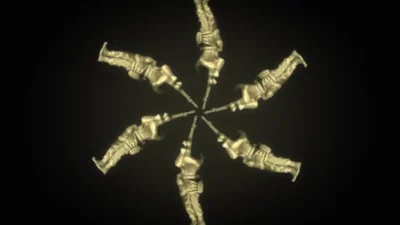
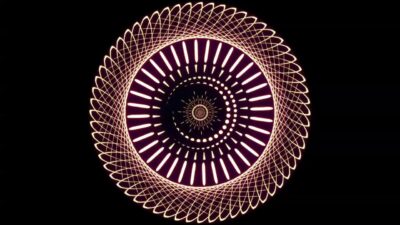

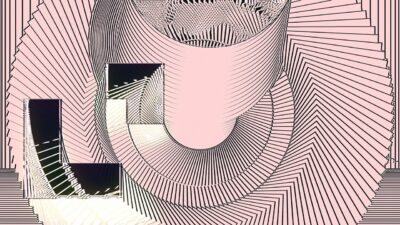

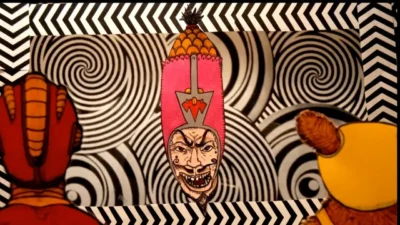
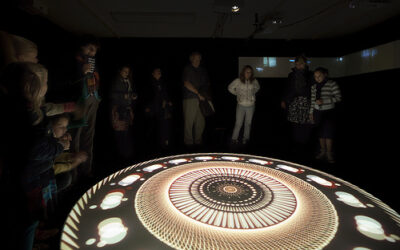
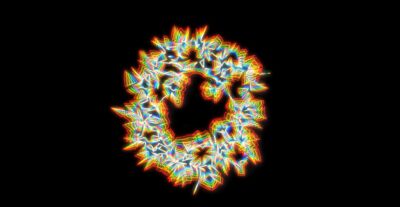

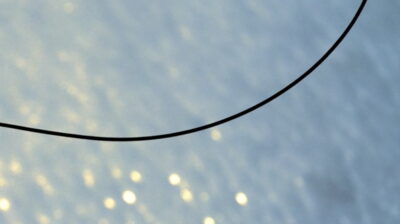


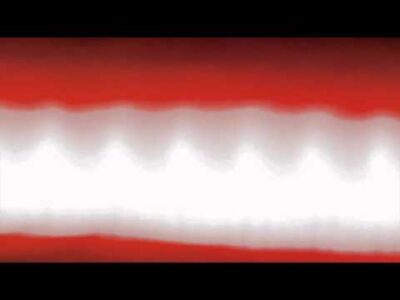
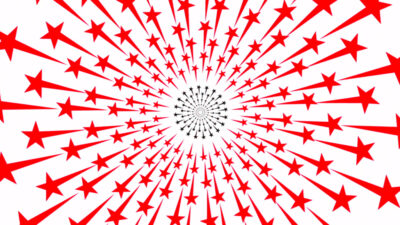

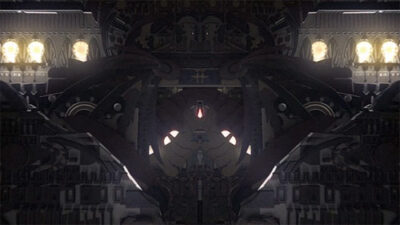

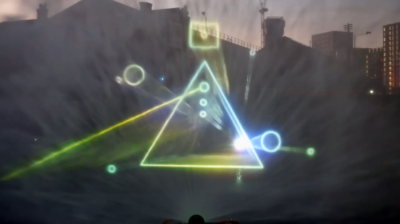
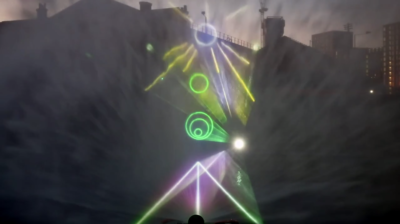
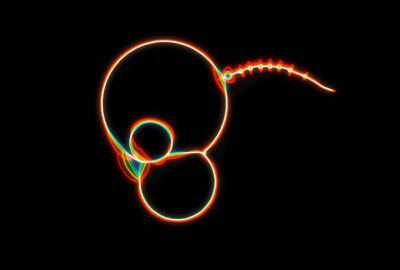
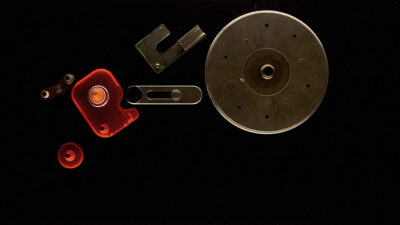

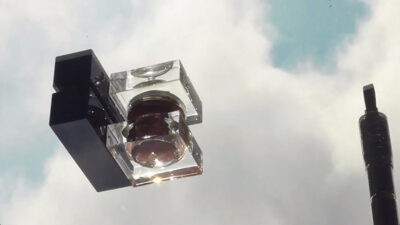


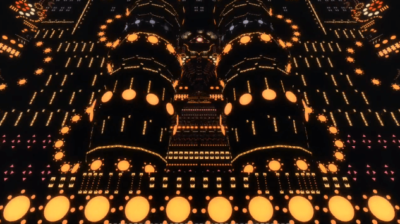


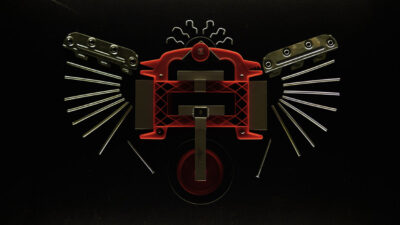
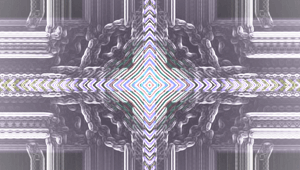

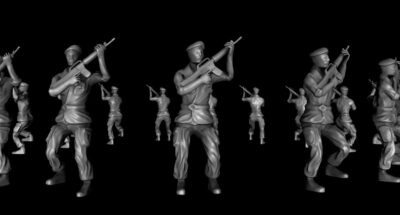

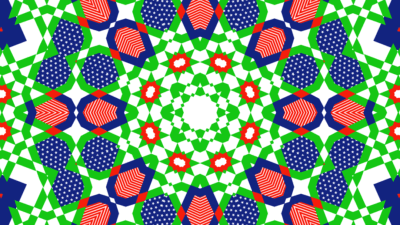


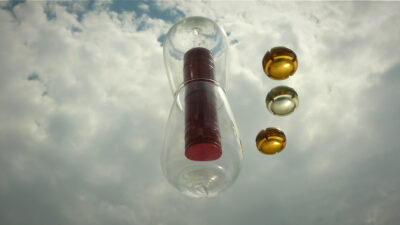






___
Further
Max Hattler Site
MH @ instagram
MH @ Twitter
MH @ IMDb
CURATOR INTERVIEW WITH MAX HATTLER
A closer look at Max Hattler
Divisional Articulations: MAX HATTLER
MH @ MUBI
INTERVIEW DE MAX HATTLER : CELUI DONT IL FAUT RETENIR LE NOM
MAX HATTLER, audiovisual abstraction in the moving image
Max Hattler: Shift
Basement Jaxx Where’s Your Head At visuals by Max Hattler
Max Hattler’s laser light graphics
Max Hattler’s Serial Parallels: Review & Interview
SURFACE WORLD: MAX HATTLER’S SHORT FILM ‘DRIFT’
____
Extras
Idiotape + Max Hattler at Seoul Museum of Art 2015
Rework vs. Max Hattler @ ITFS Stuttgart 2019
HATTLER VS. HATTLER at Sonic Visions 2012
____
Interview
from SHIFT
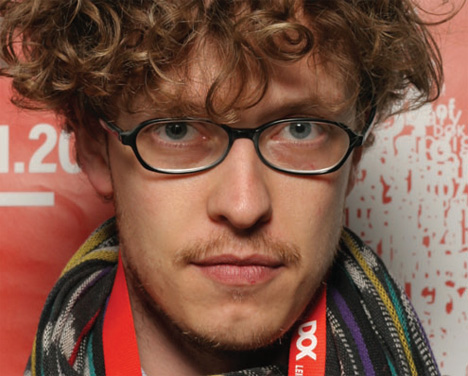
How, when and where did you start to pursue your career as a media artist/filmmaker?
I was never all that much into film, which for a long time I only knew as narrative, live-action drama. Nor was I interested in animation, which I had only experienced as ‘cartoons’ – drawn funny films. I came to film in a roundabout way, through an interest in visual arts, design aesthetics, and the time-based media of sound and music. As a kid, I was always drawing and painting. I grew up in a musical family and in my teens I started using computers to make music, while also dabbling in computer graphics and animation. Perceiving these disciplines as disparate from each other, it took me a while until I realised that I had to combine them through the medium of animation film. I first started to do this while studying at Goldsmiths. But it wasn’t until my MA in Animation at the Royal College of Art that it all really came together for me as a coherent expression.
Many of SHIFT readers might remember that your work Collision (2005) was once selected for the DOTMOV FESTIVAL 2005. And this year 2 titles of your work were selected for the festival 2010. Could you introduce those 2 works? How did you come up with the idea? What is the main concept?
1923 aka Heaven and 1925 aka Hell are based on the intricately patterned paintings of French outsider artist Augustin Lesage, more precisely on two of his paintings made in 1923 and 1925, both called A symbolic Composition of the Spiritual World. Satisfying my appetite for patterning and abstraction, as well as the abstraction of ideas, Lesage’s work proved to be a rewarding starting point for an exploration of ideas around beauty, spirituality, eternity, and the cyclic nature of time. The ideal viewing environment for the two loops is as a double-projection installation. Played continuously on two opposing walls in a blacked-out room, they offer two simultaneous, differing visions of the spiritual world. As they inhabit the same physical space, their sounds and emanating light merge and overlap to create an immersive environment.
I directed the two loops during just five days in February 2010 at The Animation Workshop in Viborg, Denmark, where they were produced by a crew of excellent student animators and computer graphics artists. Looking at outsider art for inspiration, I came across Augustin Lesage. I was immediately hooked by his obsession with symmetry and repetition, combined with his spiritualist understanding of art. Lesage, a coal miner who picked up painting after an inner voice told him to do so, claimed never to have painted except under the explicit guidance of spirits, among them Leonardo da Vinci and Apollonius of Tyana. Being partial to patterns and mirroring myself, I liked the idea of transposing his vision of the spiritual world into a contemporary moving image context – updated through the lens of pop-cultural and art-historic references – using sound, image and movement to try and heighten the sense of the spiritual, while adhering to Lesage’s parameters of symmetry. The idea of a loop made perfect sense both in terms of a tableau vivant as well as an endless cycle – eternity – implicit in Lesage’s spiritual vision.
With all my work, I tend to feel my way from a tenuous starting point to the finished piece. Since making animated films is a slow process, I prefer not to storyboard but to keep things open-ended and let them develop organically. So for this project my aim was to do the same while working two groups of students. I gave each group one of the Lesage paintings and a set of instructions, and asked them not to discuss with the other group. I really wanted to develop two very different takes on Lesage with them. Lesage’s 1923 painting has a hint of perspective, so it seemed natural to follow that lead and develop it into a forever-ascending loop. We worked out a way of mapping moving 2D animations onto the 3D geometry created by the students. This enabled us to translate Lesage’s vision into a futuristic, meditative, uplifting loop reminiscent at once of Fritz Lang’s 1927 Metropolis and the psychedelic films of computer animation pioneer John Whitney, but also of Tron (1982) and DMT hallucinations. Hence the alternative title Heaven. For 1925, we started out by cutting up sections of Lesage’s painting and layering them as a series of consecutive walls. It seemed logical to develop his patterns into moving parts and mechanisms, and doors through which the viewer must pass. 1925 ended up in a much darker place, a forever-repeating spiritual world somewhere between CG Jung and HR Giger, ancient Egyptian tombs and the Tomb Raider (1996) video game – hence the alternative title Hell.
Your work is screened at many film festivals worldwide. Which piece was the turning point work in your career?
My Royal College of Art graduation film Collision (2005) was generally quite well received and opened a few doors which enabled me to make more work. So while each work builds and extends my practice, you could see Collision as a sort of turning point (or starting point). I think Collision made a (small) impact because it was doing something new by commenting on politics through abstraction, by exploring graphic art as metaphor. Discarding traditional storytelling, it presents a marriage of image and sound to produce a kaleidoscopic take on our geopolitical situation. Subtle and bold at the same time, the film aims to mesmerise the viewer with symbols that are detached from their established context and applied in the service of an alternative reality. The basics of Collision are constituted by the colours and shapes of flags. The green of Islam is contrasted with the American (and British) red and blue. However, red is also the colour of Arab nationalism while white features in the flags of all parties involved. All this is mixed again with the graphic patterns that are central to the heritage and identity of these cultures, American quilts on the one side and Islamic patterns on the other. Rather than focusing on differences, the film points out similarities across these cultures, symbolised by their cultural iconography. While the film follows a clear narrative structure, it is at the same time open to interpretation. The film ends with a sequence in which all the colours collide and create intricate morphing kaleidoscopic patterns to the sound of gunshots and fireworks. The reading is open-ended: cultural carnage or carnival of cultures.
Could you introduce some other works of your past, short films, music videos and audio-visual performances?
One work I would like to introduce at this point is my short film Spin (2010). It develops some of the ideas from Collision, and makes use of the fact that patterning and symmetries are directly and universally perceived as beautiful. In Collision, this creates an interesting tension. The viewer is instantly pulled into the work through its aesthetics, while the narrative only unfolds progressively. As the narrative impact hits the hardest, the audience is already hypnotised, unable to escape. For me, this is also a comment on the aestheticisation of violence and the mediatisation of war, its packaging into palatable portions, attractively served as evening entertainment. Spin builds on this, focusing on what Siegfried Kracauer in 1927 termed ‘mass ornament’ – the patterning of individuals into ‘indissoluble … units whose movements are mathematical demonstrations’. Spin takes inspiration from Busby Berkeley’s escapist Hollywood musical vision as much as from communist parades and Leni Riefenstahl’s fascist fantasia. In Spin, toy soldiers – from the past and present – are forced into visual patterns to play out a conflict-as-spectacle. Sides are irrelevant; it’s just one big party for everyone. The boundaries between violence and entertainment are blurred, as are the boundaries between troops and troupes. While this is not strictly abstract work, it makes its point through an act of visual and conceptual abstraction. And while the references are historical, I think that the questions the work poses are as burning as always.
What do you get inspiration from?
Google and Bing, wallpapers and carpets, mosaics and mandalas, painting and photography, sculpture and architecture, lights and shadows. Abstract film, slow motion, motion graphics, graphic design, designer drugs, food, fashion, friends and people in general. Also minerals, stones, planets, geometry, geography, microscopy, war and religion. As well as books, boredom, excitement, stress, panic, music, sound, noise, silence and of course travelling.
Please let us know your favorite artists, filmmakers, etc.
I especially admire the work of the early German avant-garde animators like Hans Richter, Walter Ruttmann and Oskar Fischinger. And also the Americans, for example Mary Ellen Bute or Dwinell Grant, or computer animation pioneers John Whitney and Larry Cuba. All of these artists experimented with abstraction and abstractedness in the moving image, to make paintings move, to visualise music, to create time-based works that exploring shape, colour and rhythm.
What would you like to explore in the future?
I’d like to make an immersive interactive installation using brainwave navigation.
_______________
19 of Max Hattler’s 23 films
_______________
Serial Parallels (2019)
‘This experimental animation by Max Hattler approaches Hong Kong’s built environment from the conceptual perspective of celluloid film, by applying the technique of film animation to the photographic image. The city’s signature architecture of horizon-eclipsing housing estates is reimagined as parallel rows of film strips.’ — Prix Ars Electronica
the entirety
_____________
Divisional Articulations (2017)
‘Repetition and distortion drive this audiovisual collaboration between composer Lux Prima and visual artist Max Hattler, where fuzzy analogue music and geometric digital animation collide in an electronic feedback loop, spawning arrays of divisional articulations in time and space.’ — MH
the entirety
______________
Stop the Show (2013)
‘The film, commissioned by Amnesty International, is a reference to international relations and arms trade. The campaign was created in support of a United Nations treaty to regulate the arms trade between countries and reduce worldwide killings through firearms.’ — MH
the entirety
__________
Shift (2013)
‘The three minute animation exhibits influences as disparate as modernist abstraction to industrialisation and German Expressionism. The effect is jarring, and in the Tenderpixel basement a fitting mausoleum for sci-fi exploits played out under factory-esque, conveyor-belt conditions. Hattler’s work has always been exuberant and anticipatory; SHIFT presents an abstract apocalypse, hearkening back to the fears of the modern age. It’s beautiful, and it’s scary, and it’s utterly engrossing.’ — Because Magazine
the entirety
____________
Unclear Proof (2013)
‘Do you need more proof? Sensational crystal-clear footage of shape-shifting UFOs recorded under the influence in Farra di Soligo, Veneto, Italy!’ — MH
the entirety
_____________
A Very Large Increase in the Size, Amount, or Importance of Something Over a Very Short Period of Time (2013)
‘The verbosely named A Very Large Increase in the Size, Amount, or Importance of Something Over a Very Short Period of Time, sees a colourful spec playfully dart, explode and expand to the sound and music of Julien Mier.’ — directorsnotes
the entirety
______
X (2012)
‘The unknown X becomes a whole symphony of shapes… In a universe where everything is by itself yet can intersect with each other, cross-action seems the best way to solve an unknown equation.’ — MH
Festival Version
Waterscreen Version
_________
Sync (2012)
‘A circular looping animation projection installation. Some really beautiful patterns, great sound design, and probable dizziness.’ — The Curious Brain
the entirety
___________
Model Starship (2012)
‘A very brief encounter with the world of the stars.’ — FILE
the entirety
__________
RE:AX aka Peace Starts With Me (2011)
‘RE:AX, aka films4peace, is a film about mirroring and feedback—abstract patterns and shapes interact with each other, taking us on a journey from disharmony to peace. Conceptually, it’s about how violence breeds violence, and love breeds love.’ — MH
the entirety
______________
Your Highness (2010)
‘A short film that shows a man striking bizarre poses has been interpreted as a comical representation of behavior on the soccer field (…) The video features a scantily-dressed man in a field striking a series of poses that seem to represent an aggressive, competitive, and hyper-masculine mindset.’ — Deutsche Welle
the entirety
_________
Spin (2010)
‘Utilising a Busby Berkeley-style song and dance routine, with CGI toy soldiers as the players, Hattler succeeds brilliantly in blurring the lines between conflict and entertainment in a piece laced with satire. One foot wrong, and a film like this can quickly take the wrong turn into mawkish territory. But Hattler’s Spin triumphs were so many fail; engaging an audience and hitting them with the knock-out blow of a wake-up call.’ — The Double Negative
the entirety
____________
1925 aka Hell (2010)
‘1925 aka Hell is one of two animation loops directed by Max Hattler, inspired by the work of French outsider artist Augustin Lesage. 1925 is based on Lesage’s painting ‘A symbolic Composition of the Spiritual World’ from 1925.’ — MH
the entirety
___________
1923 aka Heaven (2010)
‘1923 aka Heaven is one of two animation loops directed by Max Hattler, inspired by the work of French outsider artist Augustin Lesage. 1923 is based on Lesage’s painting ‘A symbolic Composition of the Spiritual World’ from 1923.’ — MH
the entirety
____________
AANAATT (2008)
‘Hattler proposes an unusual stop-motion animation, where objects of abstract shape and unknown function move in a space that bears no relationship to any kind of real experience. The various elements move within this three dimensional space, like parts of a dynamic painting that condenses a whole series of references to contemporary art: from the constructivism of Moholy-Nagy, to the historic abstracts of Mondrian and Klee, and on to the more recent experience of conceptual and kinetic art. Changing shapes, plays of colour and transforming surfaces compose a dynamic universe that is both alienating and fascinating at the same time.’ — Invideo
the entirety
__________
Drift (2007)
‘Drift considers the body as landscape through close-up images of skin. The music likewise takes a close-up view of a series of harp chords and viola harmonics. Using real photography in extreme close-up creates a foreign yet familiar world, removed from reality, yet sometimes almost too close. In the music, this tension is mirrored. Original samples are exploded into a multitude of tiny elements before being reconstructed into a tight arrangement based on the Fibonacci series.’ — Specialten
the entirety
____________
Striper v0.1 (2006)
‘A very short meditation on the street as canvas.’ — MH
the entirety
___________
Collision (2005)
‘An ingenious visual spectacle in which the artist constructs and deconstructs, morphs and reproduces abstract patterns of American and Islamic connotations.’ — Dr Nadia Mounajjed
the entirety
_____________
Nachtmaschine (2005)
‘Night vs. light, music vs. motion, figuration vs. abstraction.’ — MH
the entirety
___________
Everything Turns (2004)
‘Life makes your head spin, and before you know it, it’s over. A very short film about time, life and death.’ — MH
the entirety
*
p.s. RIP Duncan Hannah. ** David Ehrenstein, You could chew them but they didn’t taste very good. ** Nightcrawler, Thanks. I’ve got them cued up. At least from my experience, if you end up primarily being a writer, or thinking of yourself as an artist who has words as your primary arsenal, it’s a very fortuitous talent to have, very flexible. Obviously, I write novels and so on, but it has also occasioned my being able write films which I can then make, collaborate with theater- and other artists, and it even led me to experimenting with writing with animated gifs instead of words, which weirdly worked really well, IMO. I guess I’m encouraging you to go where your excitement leads you creatively, and don’t restrict yourself, and if you were first drawn to writing, that will be there whatever you end up making, and I do think having a way with words is a really lucky resource. ‘Gone’ ended up being kind of an overall scrapbook for my first five novels, which were a five novel interconnected cycle. But I did make a scrapbook for each individual novel as well. They became less elaborate and much simpler, I guess because I had figured out a lot in the ‘Gone’ scrapbook. But, yes, I did that for the cycle books, and it was very key and helpful. Your scrapbook plans sound very exciting to me. It makes me want to do that again. Nowadays I mostly just create graphs and things without the collaging, or I guess the collaging happens in my head instead of on paper. The internet changed everything obviously. Awesome! ** Billy, Hi. Cool, and oh, yeah, right, about ‘Mars Attacks’. I love how-to stuff. I’ve done a bunch of posts organised around that, like ‘how to make a fog machine’ and things like that. Soothing, yeah. I’ll be doing more. Thanks, pal. ** Steve Erickson, Hi. Oh, thanks. My email is denniscooper72@outlook.com. Terrible about your friend. I have some friends who still haven’t recovered from the effects of the lockdown, but not as badly as your friend. I should do a post about how to overcome roller coaster phobia. Hm. ** _Black_Acrylic, Yes, whew! Dude, giant congrats on becoming an uncle! That’s so sweet! And Play Therapy was a huge help to my current stressed out self this weekend. I listened to it twice! Magic man = you. ** John Newton, Hi, John. Yeah, I used to make beelines to those machines at every entertainment place. Unfortunately, those objects don’t live very long. They get goopy, and not in a good way. I’ve been vegetarian or vegan since I was 15 years old, but I’ve always wondered about your famous cheese steaks, and now I can sort of fulfil that jones one day. Sure, I used to love mushrooms. Psychedelics were my drug of choice, and I indulged heavily for a certain period of my life. I gave up drugs in the late 90s to protect my brain. Like you I’m a coffee/tea guy. And cigarettes. And if I’m in a social situation that’s stressing me out, I will take a few sips of a beer or wine, but that’s it. I smoke Camel Lights. It’s very rare that I see French people smoking Gitanes and Gauloises. A lot of people I know here roll their cigarettes. And Vaping is big here like everywhere else. I still think it looks kind of embarrassing, but I’ll get used to it, I’m sure. ** Right. My blog continues its informal mission to showcase the works of experimental filmmakers at every reasonable opportunity, and today it’s the turn of the terrific and fun Max Hattler, whose works I recommend that you imbibe. See you tomorrow.




 Now available in North America
Now available in North America 
Dennis! I think I’ve given up on film producing already.
Man, got swamped to fuck at work middle of last week on. And I don’t get on the ‘puter after work. Really don’t look at my phone much either. But I’m back.
I went to that wedding Saturday. The ceremony may have been 10 minutes. That was good. The reception, however, hahaha.
A 93-year-old lady fell and broke her leg. At the same time, a brawl broke out between the groom and three of his sons. They tried to throw him in the pool but he fought them viciously and they couldn’t do it. Then tempers flared. His oldest son is a cop and ended up getting his father in one of those cop headlocks and had him pinned the ground. People had to pull him off. And this dog that some woman brought because she’s the dog’s comfort human started going berserk.
A good time all around.
Hi!!
And here I am, back from Prague. They were just a little bit short of spelling out my name during “The Black Parade”, haha. But they played it, and it was quite an experience to see and hear all those lovely emo kids singing their hearts out.
On a quite different note, I’m so incredibly sorry that losing your film is even a possibility. I can’t fathom why anyone who’s involved in its birth (or is supposed to be…) would lie about your funding situation. This is extremely fucked up. Have you heard any news since?
Love only ever wearing unmatching socks, Od.
The work of Max Hattler is a definite hit with me! I dream of the cinema over the road from my new flat hosting an experimental film festival. MH would defo have his name up there in lights.
Thanks about the recent Play Therapy. I’ve just last week received a haul of 800+ records from my stash up in Dundee storage, so the playlist will soon have a new lease of life for sure. Am also reworking my recent short story about the boy killing his father in a computer game. Its title is now Garden Chase 2.0 and I think I’m making some good progress.
KISS ME I’M SAUDI ARABINA !
Drift is so cool! Sorta reminds me of this: https://whitneymusicbox.org/index.php?var=v20 (I now see that John Whitney is explicitly mentioned in the interview, I hadn’t bothered to google his name from the linked site before now).
Also–eavesdropping on your other comments–if you’ve been vegetarian since you were fifteen then good God you’ve spent a lot of time in the dark ages of fake meat. My dad used to order Wildwood burgers shipped in from California when I was a kid, and I remember liking them but I don’t think I’ll ever be able to forget the time they gave me and my brothers this insane bout of food poisoning in which we all woke up at four in the morning and started vomiting together, which was strangely a sort of nice experience (for a little bit at least).
Hattler’s new to me, but I’ll check some out of these films out tonight.
I saw Phil Tippett’s MAD GOD, an excellent piece of grim experimental animation, today. There’s no real narrative, but it builds an incredibly detailed world (the film was shot over a 33-year period!) influenced by painters like Bosch and Bacon, as well as Svankmajer and the Brothers Quay. Tippett has a long, successful career as a special effects artist – he worked on the first STAR WARS trilogy, JURASSIC PARK & STARSHIP TROOPERS – but this plays like extremely well-crafted and relatively slick obsessive outsider art. (Simon Abrams’ review likened it to unmade/unseen dream projects like Jodorowsky’s DUNE and the avant-garde films George Lucas has discussed making, and I thought of HARD TO BE A GOD.)
They’ve already become a cliche, but I find some of the Dall-E AI memes entertaining. I made one with the prompt “Tony Soprano DJs at an EDM festival while tripping on mushrooms” that came out well enough to be my next album cover!
I don’t know Max Hattler’s work. I like the flatter pieces, though he also does interesting and unusual stuff with 3D animation.
Clearly I’ve been out of it, because I just discovered Michel Fiffe’s Panorama. Some really gorgeous body horror art, see for example
https://www.goodreads.com/review/show/3625323890
Steve, Mad God is screening locally soon. Can’t wait.
Bill
Thanks so much for the wise advice and information!
As always, I will be reading here.